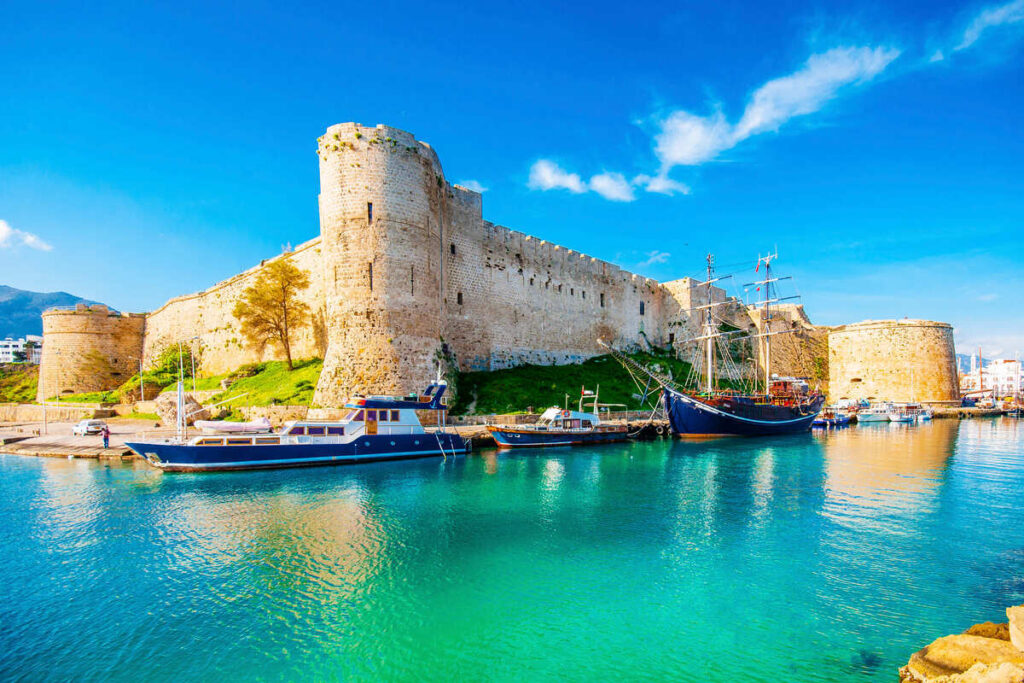Travel Guide
This Country Will Join The Schengen Zone Impacting All Travelers And Digital Nomads
Following in the steps of Croatia, Bulgaria, and Romania, the last 3 countries to have joined the world’s largest passport-free travel zone, Cyprus will ascend to the Schengen Area in early 2026, as confirmed by its President.
Despite being a member of the European Union since 2004 and having adopted the euro as its official currency, the Eastern Mediterranean nation has been waiting on the sidelines for over two decades to be admitted to the borderless territory.
It’s been a long time coming, but the status quo will finally change in the coming months, as negotiations are set to conclude—and if you think this has nothing to do with you as a traveler, or even a digital nomad, think again:


Cyprus’ Schengen accession has implications for all, and for a majority of tourists planning on staying in Europe a little longer, most are not positive:
Syphus? Cyprus? Cypress Trees?
For starters, where even is Cyprus? Seeing that most Americans have not even heard of the European nation, we thought we’d give you a brief introduction before getting into the actual juicy stuff:
As stated before, Cyprus is an island-country in the East Mediterranean, just south of Turkey, and besides Greece, the only other sovereign state in the world where Greek is an official language—though there is more to the story, yes, Cypriots are largely ethnic Greeks, and speak Greek.
Cyprus is primarily known for its well-developed resort zones, most notably Ayia Napa and Protaras, where virgin white-sands meet turquoise waters, and ancient heritage:


The country itself dotted with stone-built villages frozen in time, like the picturesque Lefkara, lush central hills home to traditional family-owned wineries, and Hellenic monuments galore, from the ruins of Kourion, a former Greek city-state, to the UNESCO-listed Tombs of the Kings.
Though it is not the average American’s go-to destination in summer, it is one of the warmest countries in the Mediterranean basin, with temperatures soaring above 90 degrees on the coast, as well as one of the most affordable:
A one-week stay in a private room in the center of Larnaca, a popular coastal city on the south coast, will set you back as little as $215.
In case you’re wondering what the Cypriot capital is, that’s Nicosia for you, and remember when we told you earlier there was ‘more’ to the story?


Northern Cyprus For Dummies
Well, the thing is, Nicosia is only partly controlled by the internationally recognized Republic of Cyprus, or more specifically, its southern districts.
The northern portion of the city, as well as the entire northern third of Cyprus, which juts out into the Mediterranean like a finger, is occupied by the Turkish Republic of Northern Cyprus, a self-proclaimed state formed following a Turkish invasion in the seventies.
Walking in downtown Nicosia, you’ll notice, in addition to the beautiful ocher-colored buildings and Orthodox churches, that a heavily militarized United Nations buffer zone separates both sides. You can only cross from North to South by showing a passport at official checkpoints.


One of those is in fact located on Nicosia’s main pedestrianized street, Ledra, which starts in the Greek half of the city and ends in the Turkish-speaking north.
If Cyprus’ Old World charm, or even just the crazy geopolitics of it all have piqued your interest, you can read about this hugely-underrated country more in depth here.
What Do We Know So Far About Cyprus’ Schengen Accession?
Now that you’ve been given a quick rundown, let’s move on to what is truly relevant: Cyprus will soon be in Schengen.
In the words of President Nikos Christodoulides himself, who gave a speech on the matter on May 12, his country will have ‘all the necessary groundwork’ wrapped up by the end of the year, allowing for swift access to Schengen in early 2026.


We know politicians love to promise, and then not deliver, and Cyprus’ Schengen aspirations have been kicked down the road for 21 years now, but Christodoulides was assertive in saying this ‘isn’t just a wish, it’s a national commitment‘.
For Cypriots and tourists alike, this would mean easier travel between Cyprus and mainland Europe, and far fewer border hassles:
Currently, all airside or cruise ship passengers landing in Cyprus are subject to passport control, even if coming from fellow EU nations, and Schengen membership would instantly abolish the hard border.
So far, so good, but what of the downsides we mentioned at the very beginning?
How Exactly Is This Bad News For Travelers?


As most long-term travelers and digital nomads will know at this point, we flinch at the slightest indication that another European country will be joining ranks with Schengen for one reason, and one reason only:
It automatically means less time allowed to stay in the Old Continent. We’ll explain.
The way Schengen works, tourists can only be present in the border-free zone for 90 days out of any 180-day period, and this includes Americans, unless, of course, they hold a valid resident visa in a Schengen country.
The problem is, this once-select group now includes 29 out of 44 European countries, which means that, in over 65% of the continent, the Schengen acquis apply.


Yeah, traveling without borders is great, until you realize you only have 10 days left to stay in Italy after spending 80 days traveling across Portugal, Spain, France, Belgium, Germany, and Switzerland. You see what we’re getting at?
While most countries do allow visitors to stay for 90 days, Schengen’s 90-day rule severely restricts the amount of time you get to have not in one, but a whopping 29 destinations.
You don’t get 90 days in France, then 90 days in Italy: your three months encompasses all of them. Period. Additionally, if you’ve spent a continuous 90 days in the Schengen territories, you have to leave immediately, and you can’t return for another three months.
The End Of The Schengen ‘Reset’ Era


For years, Cyprus has been used by many long-term travelers and remote workers looking for ingenious ways to prolong their European adventure as a ‘reset’ country:
In other words, once they’ve used up their 90 days in mainland Europe, they could just fly to this Garden of Eden in the middle of the Mediterranean for some beach time, and more cultural expeditions, while waiting to be re-admitted in the continent.
Starting in 2026, this will no longer be possible, at least not in Cyprus.
Already ‘depleted’ your 90-day allowance city-hopping between Austria, Slovenia and Croatia, or any grouping of Schengen countries you can think of? Sorry, you can’t fly to Cyprus—not for another three months, anyway.


Of course, Cyprus’ Schengen inclusion is unlikely to directly affect short-term vacationers, at least not insofar as the length of stay is concerned (but we’d advise you to read on carefully, if you belong in this category).
Americans Will Need To Apply For A Permit To Visit Cyprus
Like any other Schengen country, Cyprus will also impose an ETIAS requirement on all current visa-exempt visitors.
This is relevant to long and short-term travelers, and digital nomads: from late 2026, you will no longer be eligible to travel visa-free to Cyprus as an American, and any other Schengen country, unless you hold a valid ETIAS.
An ETIAS is an Electronic Travel Authorization issued to citizens of visa-waiver countries, and it essentially functions as an online visa:


You are required to submit an application by filling out an online form, and paying a €7, or roughly $8 fee, depending on the exchange rate at the time.
An ETIAS is valid for up to three years, or it may expire sooner if your passport has got fewer years left, and it enables you to travel as many times as you wish to the Schengen Area during the validity period, provided that the 90/180 rule continues to be respected.
Without an ETIAS, you will not able to board most Europe-bound flights, unless it’s a country that’s neither in the EU, nor the Schengen Area (though the United Kingdom has its own travel authorization in place).
What About Northern Cyprus?


When Cyprus joined the EU in 2004, a special provision was made to address the island’s complex geopolitical status.
According to EU law, all of Cyprus is technically part of the European Union, even the Turkish-occupied north, though EU law is suspended there as the Republic of Cyprus does not effectively exercise control.
When it comes to Schengen, we suspect a similar policy will be implemented: a border will continue to separate the south from the north, and while all passport checks between the south and other EU member states will be phased out, a border will remain in place in the north.
Additionally, it’s important to note that the Republic of Cyprus does not customarily allow foreign citizens to enter the southern districts when landing first in the north, via the Turkish-controlled Ercan Airport.
You can freely cross from south to north and back if you’ve touched down first in one of the Cyprus-administered airports or ports, namely Larnaka International and Pafos International Airports or the ports in Larnaca, Limassol, and Paphos.
Ready For Your Trip? Check The Latest Entry Requirements For Your Destination Here
↓ Elevate Your Travel↓
Sign Up Now For Travel Off Path Premium! No ads, VIP Content, Personal Travel Concierge, Huge Savings, Daily Deals, Members Forum & More!


✈️Join Our Travel Off Path Community Forum: Where travelers unite, ask questions, share experiences and even find like-minded travel buddies!
SUBSCRIBE TO OUR LATEST POSTS
Enter your email address to subscribe to Travel Off Path’s latest breaking travel news, straight to your inbox.
This article originally appeared on TravelOffPath.com
Opinions expressed here are the author’s alone, not those of any bank, credit card issuer, hotel, airline, or other entity. This content has not been reviewed, approved or otherwise endorsed by any of the entities included within the post.

